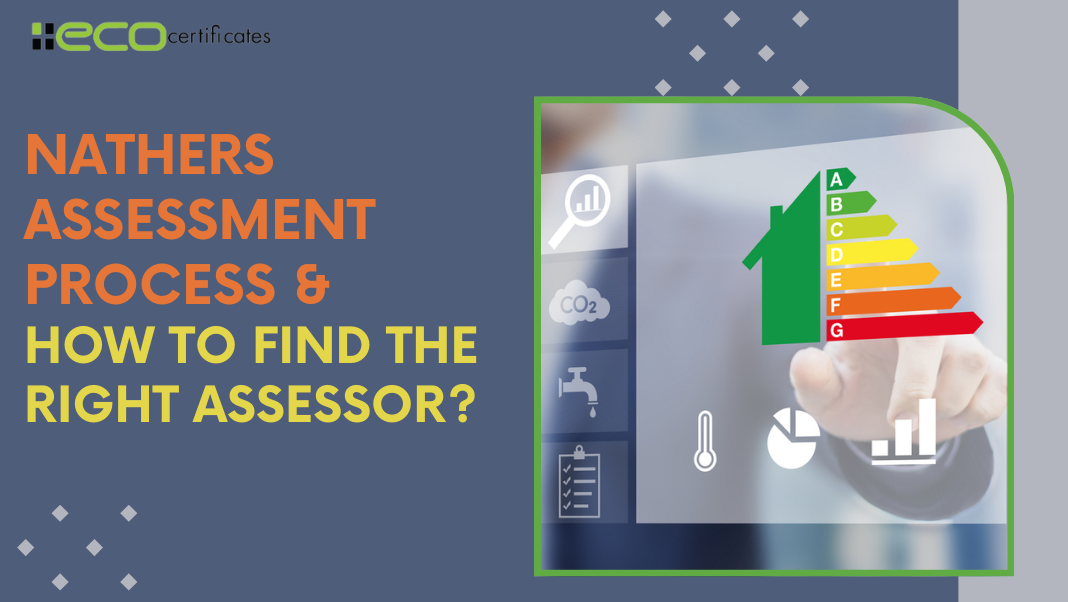Residential buildings are responsible for nearly 24% of overall electricity consumption and more than 10% of total carbon emissions in Australia. To reduce the carbon emission of residential swelling, the Australian Government introduced several initiatives. And one such initiative is NatHERS.
NatHERS is a national framework that helps homeowners, builders, and architects design and construct energy-efficient homes. An accredited NatHERS assessor performs the NatHERS assessment to provide a star rating to residential structure.
So, what’s included in the NatHERS assessment process? And how do you find the right assessor for your residential project? Let’s find out!
What are the types of NatHERS assessment?
Through NatHERS assessment and star rating, you can fulfil the energy efficiency requirements of the NCC (National Construction Code). NatHERs assessment is applicable for:
- new free-standing houses,
- townhouses and
- apartments
During the NatHERS assessment, you’ll need to obtain a star rating in two categories.
Thermal star rating
This rating is based on a scale of 0 to 10. It indicates the thermal performance of your residential dwelling. The rating assesses the amount of heating and cooling needed to keep the indoor temperature comfortable.
The minimum requirement has now been set to seven stars.
Whole of Home rating
This rating is newly introduced, and residential structures receive a ‘Whole of Home’ rating out of 100. It offers a detailed overview of the expected energy use of the home. During this assessment, several factors are taken into account. These include
- your dwelling’s thermal performance
- major fixed appliances such as hot water system, lighting fixtures, heating and cooling appliances, etc
- onsite renewable energy generation and storage.
New apartments and residential buildings need to obtain a minimum 50 rating out of 100.
This rating is similar to NABERS energy rating for offices.
What are the tools used for NatHERS assessment?
Currently, NatHERS offers four accredited software tools to conduct NatHERS ratings:
- AccuRate (most common)
- HERO
- BERS Pro,
- FirstRate5
The CSIRO-developed calculation engine serves as the basic framework of these tools. The engine has the capability to predict the temperature inside a residential building on an hour-by-hour basis for an entire year.
This prediction is based on several factors, including:
- Size and dimensions of the building
- Type of construction materials
- Building insulation levels
- Type and placement of windows
- Building orientation
- Applicable climate zone.
So during NatHERS assessment you’ll all these data and additional relevant infornation to obtain the correct star rating. The more stars you have, the more energy-efficient your home is.
What is the NatHERS assessment process?
During the assessment, accredited assessors will collect relevant data. These information is fed into oneof the four software. Once the assessment is complete you’ll receive a NatHERS certificate.
Here’s how the NatHERs assessment works:
NatHERS Assessment For Thermal Performance
- Based on the service package you choose, your NatHERS assessor will draft the building plans for your residential dwelling. If you already have a team of designers and architects, you can consult them to create the building plan and design.
- After completion of the building blueprint, The NatHERS Assessor thoroughly reviews the the plan details and technical specifications. They’ll also review any other relevant documents that can affect the energy efficiency of your residential building.
- In the next step, you’ll get a preliminary rating known as NatHERS Assessor’s drafted rating. If your rating doesn’t meet the minimum requirement, you’ll need to incorporate certain modifications. Your assessor shared the suggestions based on the NatHERS assessment.
- The thermal assessment will be complete if your building meets the minimum requirements after incorporating the changes. If there are no changes required then the assessment is concluded without any modifications.
- After completing the assessment your NatHERS accessor will issue a NatHERS Certificate. After receiving this certicitate you’ll get the permission to start your construction.
NatHERS Assessment for Whole of Home
They will verify the thermal performance rating with the NatHERS Assessor.
- In this assessment, the NatHERS Assessor starts by documenting the necessary measurements related to your residential building’s energy consumption.
- Once the data collection is complete, the NatHERS Assessor will enter the relevant information into the assessment program.
- If your dwelling doesn’t meet the energy requirements, you’ll need to incorporate design adjustments.
- Similar to the thermal NatHERS assessment, you’ll receive a certificate and Whole of Home rating upon successful completion.
How to Find The Right NatHERS Assessor For Your Project?
NatHERS assessment is vital for your residential project. Without proper documentation and building plans you’ll end up with delays and complications.
But with a professional building consultant and assessor, you can avoid all these complexities.
However, you need to choose the right assessor for your project to achieve desirable outcomes. This is applicable not just to NatHERs but also when you want to get a NABERS energy rating.
We have compiled four tips that you should consider before selecting your NatHERS Assessor.
Qualifications
Always select an Assessor with appropriate building industry degree qualifications. This might include education and experience in engineering, architecture, construction law, or building development.
Manpower
You’ll need your reports and ratings early so that you can go ahead with the construction. So, choose a service provider with a minimum of 3-4 team members dealing with energy assessments.
Subject Matter Expertise
Your NatHERS consultant have the necessary expertise on specific parts of a NatHERS aassessment. Check if they’ve the knowledge to help you implement best practices for completing a NatHERS report.
Past Work Experience
Past work experiences are important. It shows their working style and field of expertise. Past projects are living, breathing proof of their working efficiency. So, ask them for their portfolio.
Wrapping Up
The Australian Government is increasingly focusing on reducing greenhouse gas emissions. In fact, Australia is geared towards attaining net-zero carbon emissions.
With NatHERs assessment, you also play your part in creating a cleaner and greener earth.
Additionally energy-efficient home have reduced operational expenses and offer a more comfortable environment to live in. Therefore the market value of these residential building are much higher. Hire a NatHERS assessor today to rate your building.






